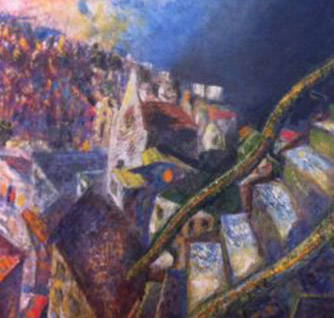Technocratic Scientific Empire – the good, the bad, and the man that could not dream
Author: Emmanuel Loeb
We all live in a technocratic capitalistic world that demands innovation and advanced developments to improve health and quality of life, as well as to increase income and prosperity. If we compare the scientific work and articles that were been published in the first half of the 20th century to the ones that are being published at present, major changes in the profundity and quality of the text are evident. In the old days a scientist came up with a thesis based on some hypotheses, and used clear milestones in the road to prove his estimations. A nice example is the remarkable work of Sigmund Freud. The process that was adopted by him in order to accomplish the desirable result which was based on a hypothesis and required creativity and a profound widespread thinking pattern, that was far beyond the technical possibilities and limitations. This is evidenced by the fact that his conclusions are still very relevant today, such as the finding of the subconscious.
The Second World War was the turning point event that changed the scientific world and humanity way of thinking the intellectual human chain completely. This war did not only take 20 million lives, but was also a destruction of millions of books, data and life work of thousand of brilliant scientists that had to leave Europe under the Nazi occupation (Freud was one of them). The world recovery and reconstruction after the war was based on technological improvements and the power of the industrial revolution that was initiated before the war. This essay is not aimed to criticize the current science or our life style but only to discuss the pros and cons of the technocratic system we live accordingly.
In order to continue this discussion we should first define the term technocracy. Therefore, I use the below text that was written by American officials in 1943.
“Technocracy: The term technocracy was originally used to advocate the application of the scientific method to solving social problems. According to the proponents of this concept, the role of money, economic values, and moralistic control mechanisms would be eliminated altogether if and when this form of social control should ever be implemented in a continental area endowed with enough natural resources, technically trained personnel, and installed industrial equipment. In such an arrangement, concern would be given to sustainability within the resource base, instead of monetary profitability, so as to ensure continued operation of all social-industrial functions into the indefinite future. Technical and leadership skills would be selected on the basis of specialized knowledge and performance, rather than democratic election by those without such knowledge or skill deemed necessary.(1)”
The good:
Technocracy in a capitalistic world provides a better life due to technological achievements that one could not even think about few decades ago. The domination of the technological improvements has become the key for prosperity and wellbeing. Making good, beneficial products, contributing to life quality, has always been an important drive of human kind. Ever since the Scientific Revolution and the Enlightenment, there has been a widespread and sometimes utopian belief that progress in science and technology would inaugurate a new period in the world’s history, in which the scarcity problem will be solved, and richness and wellbeing will be available for everybody. Researchers, engineers and designers believed that their scientific and technical expertise could lead society to a better future. However, since the revelation of Postmodernism, utopian beliefs and strivings have lost much of their attraction, and even have come suspicious (2).
The bad:
The postmodern breakdown of the totalizing world Image was a reaction to a growing awareness that modern, industrialized societies were full of rigid disciplines and social repression. The emergence of enormous environmental problems caused further disappointment from the belief in the wonders of the technical progress. On one hand, the end of the utopian thinking is to be welcomed as it means an end to the paternalism and social repression. However, the clear downside of the disengagement from the utopia is that there is no longer a shared spirit that guides and nourishes social engagement (2). Indeed, the “technological renaissance” carries with it many ethical and social problems. Taking into account that 16% of the world population still cannot read and write (1998 UN definition), we should ask ourselves what is the fraction of global population that can enjoy the prosperity of the advanced technology. Technocracy can cause a wide gap between the west and third world counties, this might initiate hate and frustration leading to extremism and violence. But above all, it might turn us, as scientists, and the society to adopt narrow minded perspectives which depended only on technology improvements.
The man that could not dream:
The dominance of technology in technocratic life style has many impacts on thinking patterns and modern scientific innovation. The metaphor of a man that could not dream represents a worry that increased focus on technology developments might create a system that is fully dependent on this paradigm. In a technocratic world, spiritual and holistic approaches, combined with other disciplines, such as art and humanities, might be neglected and become irrelevant. Therefore, technology should stay as a tool and not as an objective. The recognition in technocratic benefits and disadvantages should be obviously clear for scientists, engineers, entrepreneur and decision makers, and meet a top priority when developing new innovations.
References:
- “Questioning of M. King Hubbert, Division of Supply and Resources, before the Board of Economic Warfare”. 1943-04-14.
- Dorrestijn, S., & Verbeek, P. P. (2013). Technology, wellbeing, and freedom: The legacy of utopian design. International Journal of Design, 7(3), 45-56

